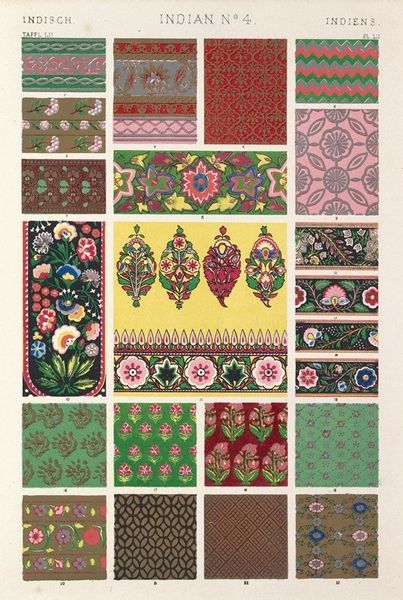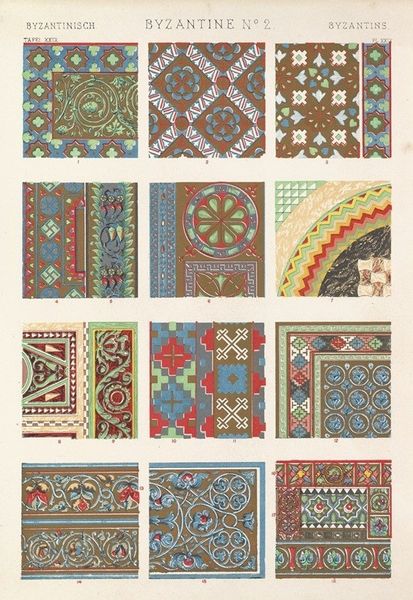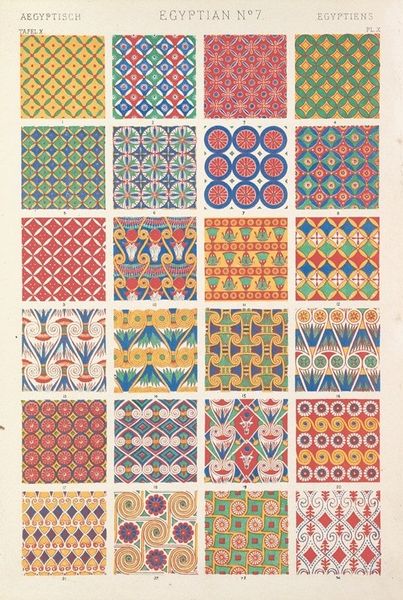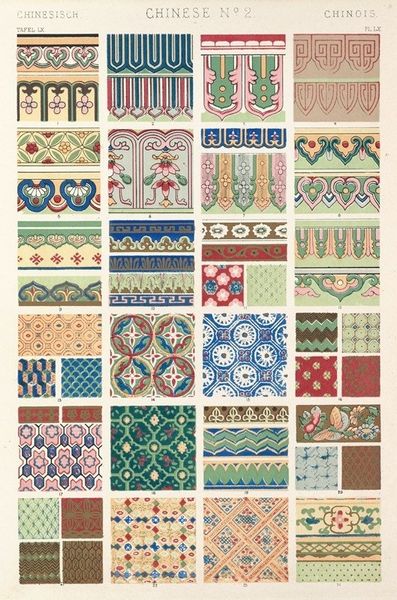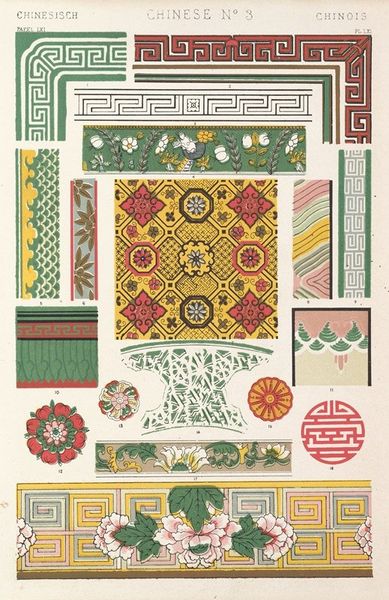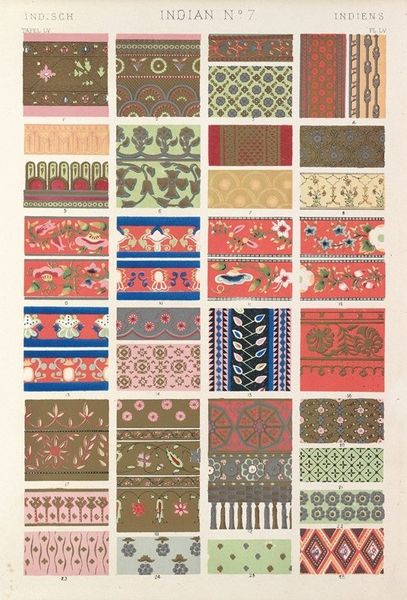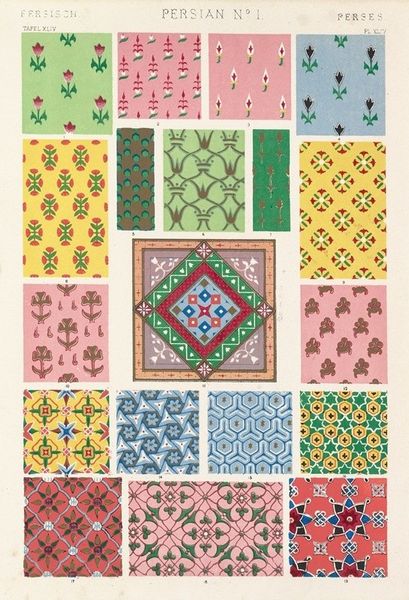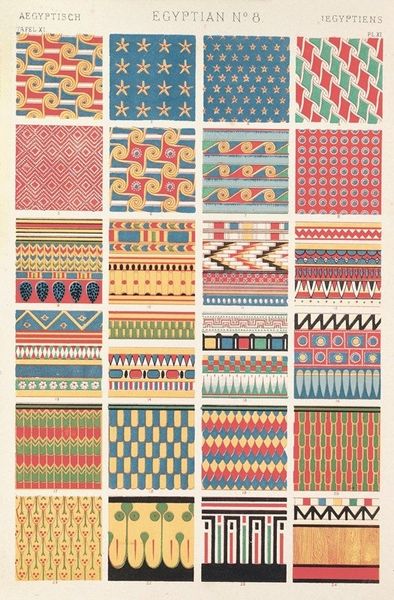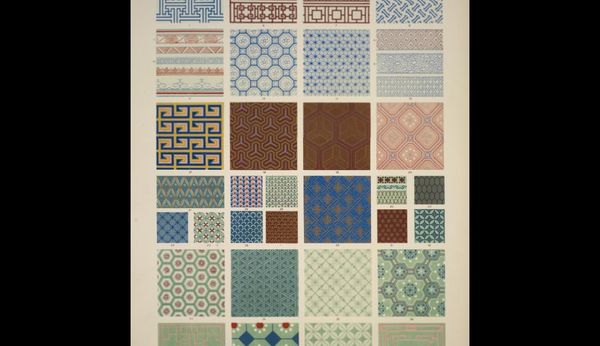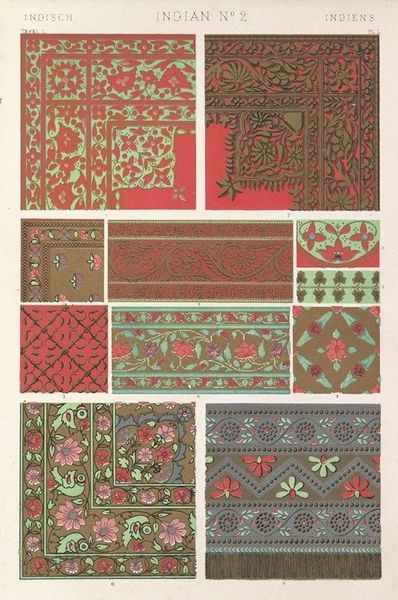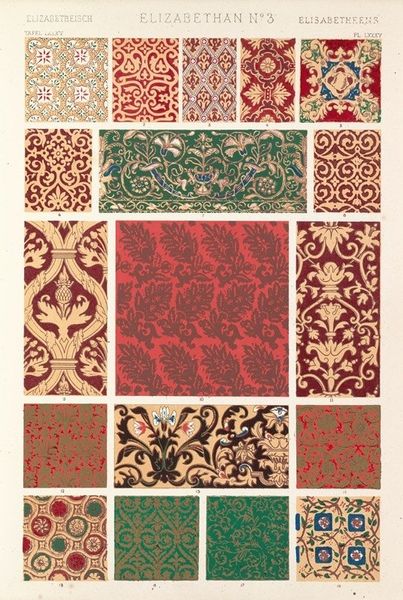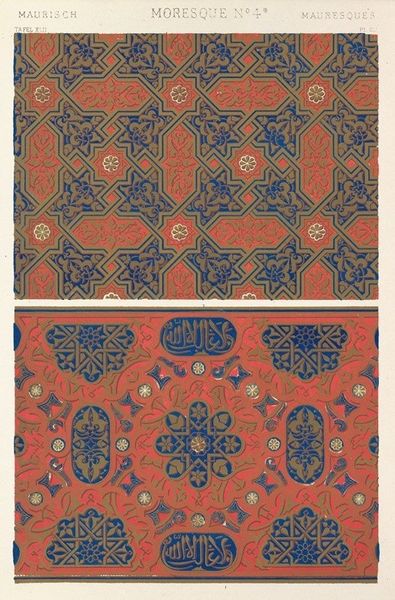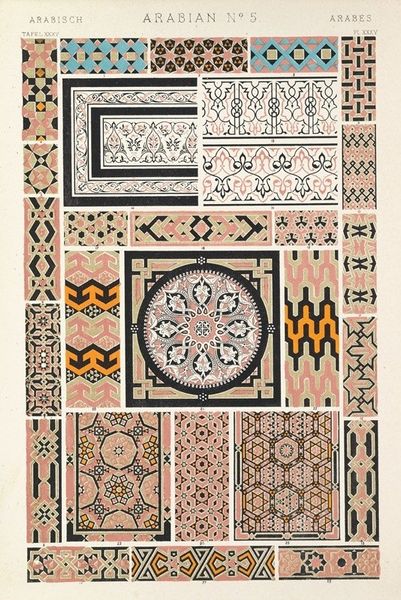
# print
#
geometric
#
islamic-art
#
textile design
#
decorative-art
Copyright: Public Domain: Artvee
Editor: So this is Owen Jones's "Persian No. 2" from 1856. It's a textile design, and the range of geometric motifs is stunning. What immediately strikes me is how ordered and intricate each pattern is. It almost feels like looking at a coded message, a language I can’t quite decipher. How do you interpret this work? Curator: It’s fascinating that you see a coded message, because in a way, you're not far off. For me, these aren't just patterns, they’re visual echoes of a culture's soul. Islamic art often uses geometric designs to represent the divine order of the universe, avoiding representational imagery in many religious contexts. What emotions do the different colours evoke in you? Editor: I think the blues and greens feel calming and ordered, while the reds and yellows create a sense of vibrancy, almost like music. Curator: Precisely. Notice how Jones, though a Western artist, deeply immersed himself in understanding the visual vocabulary of Persian design. The repetition you see isn't just decorative, but reflects the infinite nature of God. Can you see how certain motifs might have resonated particularly strongly during the Victorian era, a period known for its own fascination with symbolism? Editor: I hadn’t thought of that! The Victorian interest in symbolism does connect. I guess they both saw pattern as more than just decoration. Thanks so much, I see so much more to it now. Curator: My pleasure. Remember that these patterns speak volumes if you are willing to listen. The act of translating visual culture deepens our understanding.
Comments
No comments
Be the first to comment and join the conversation on the ultimate creative platform.

